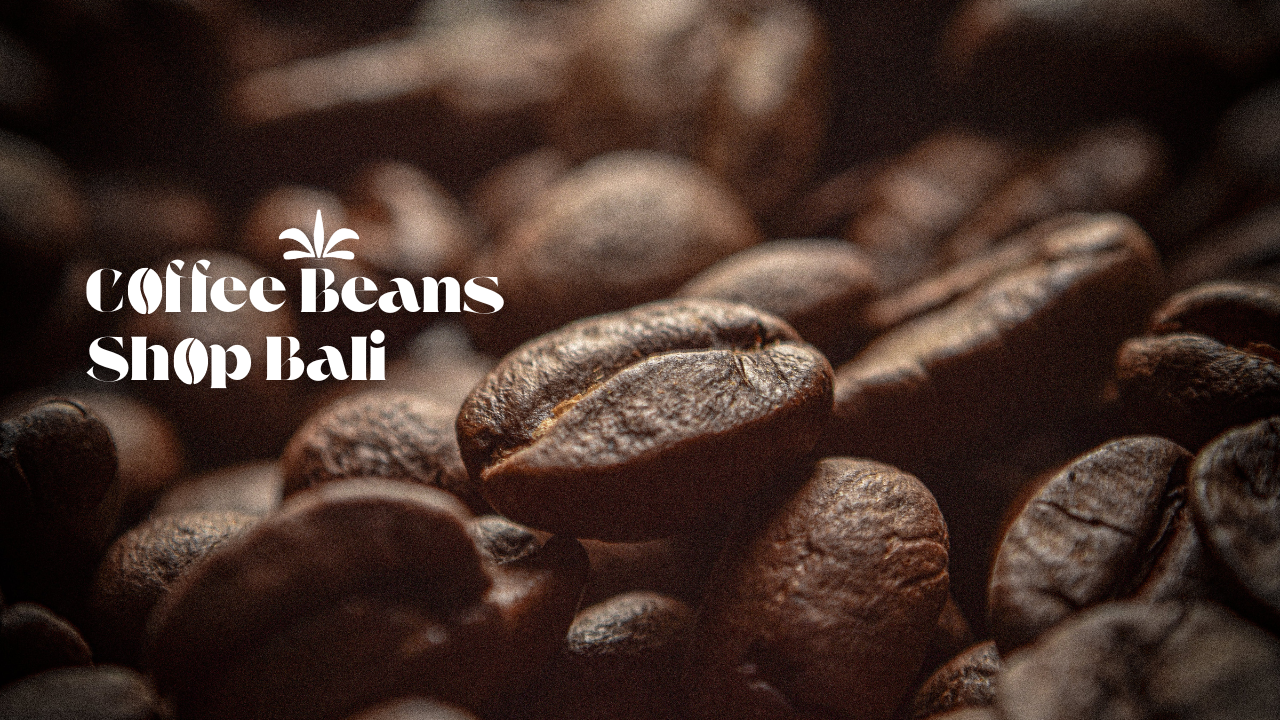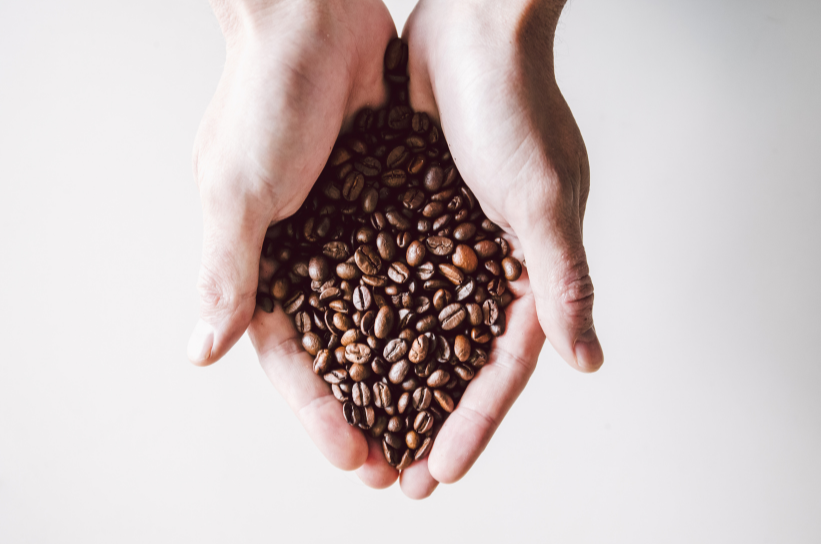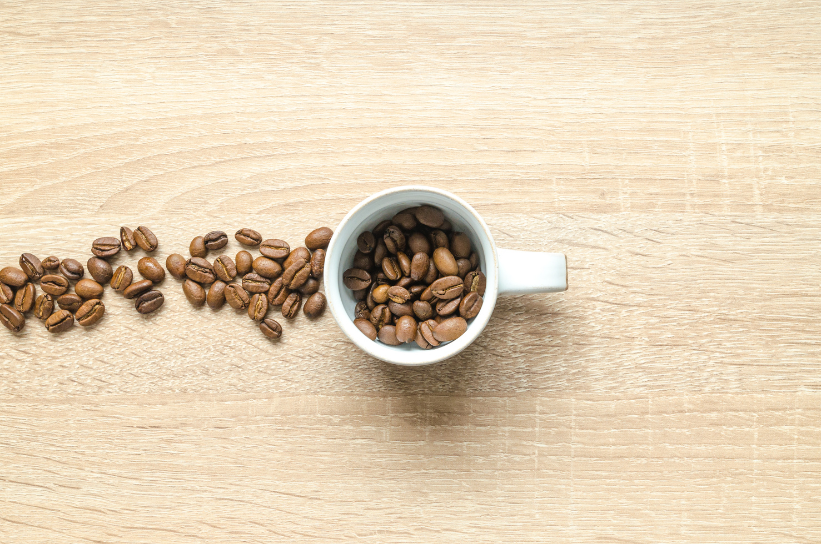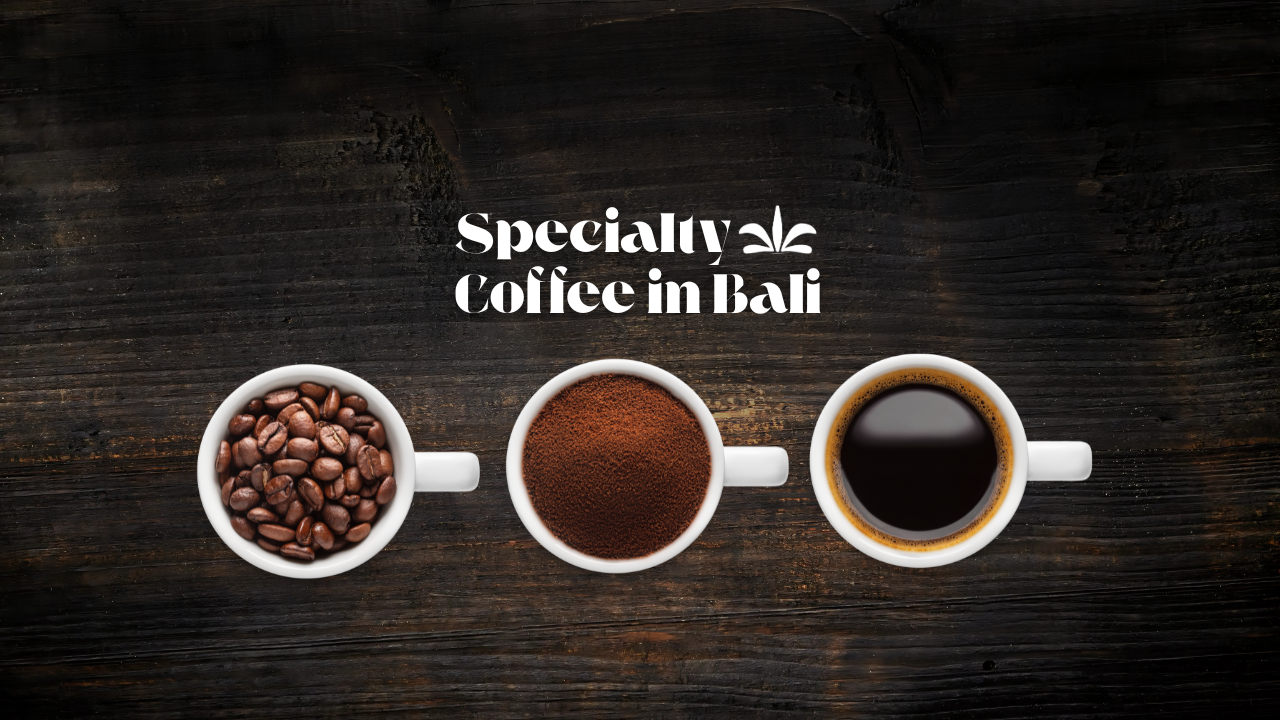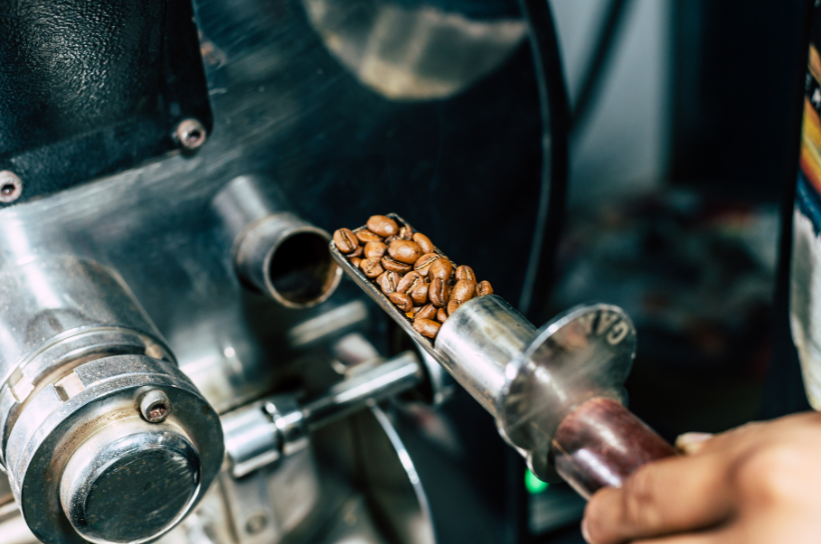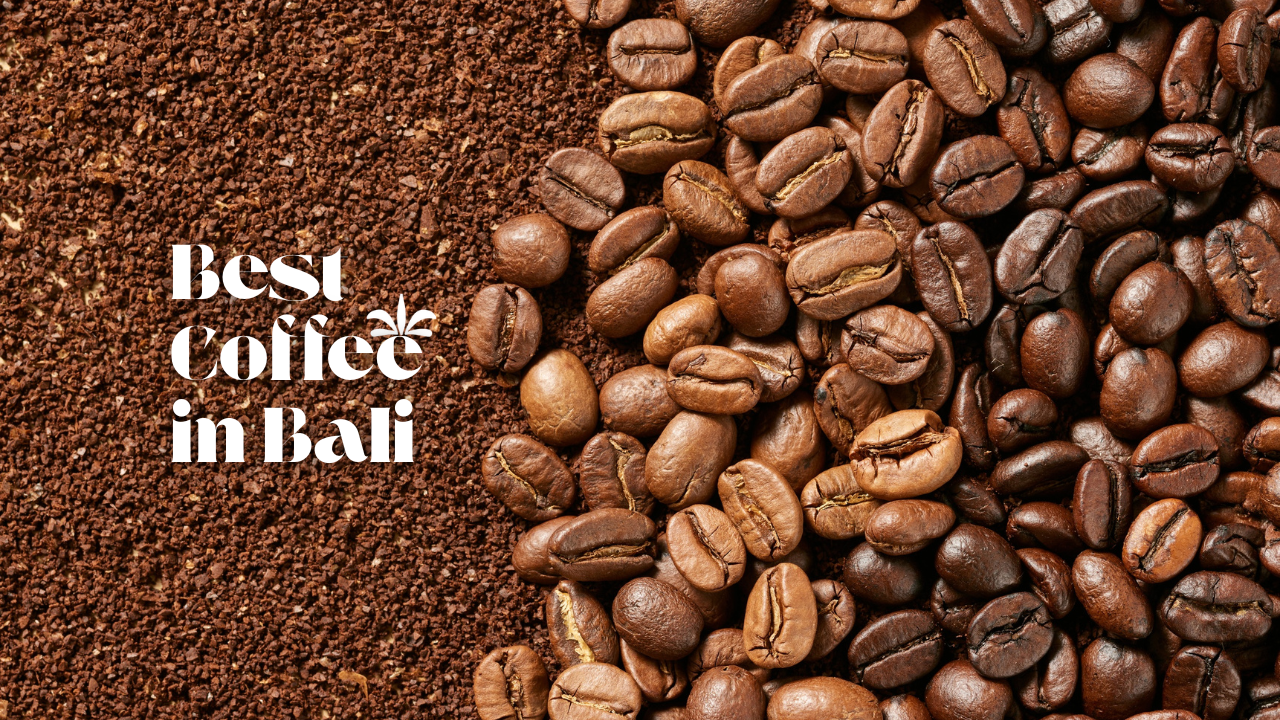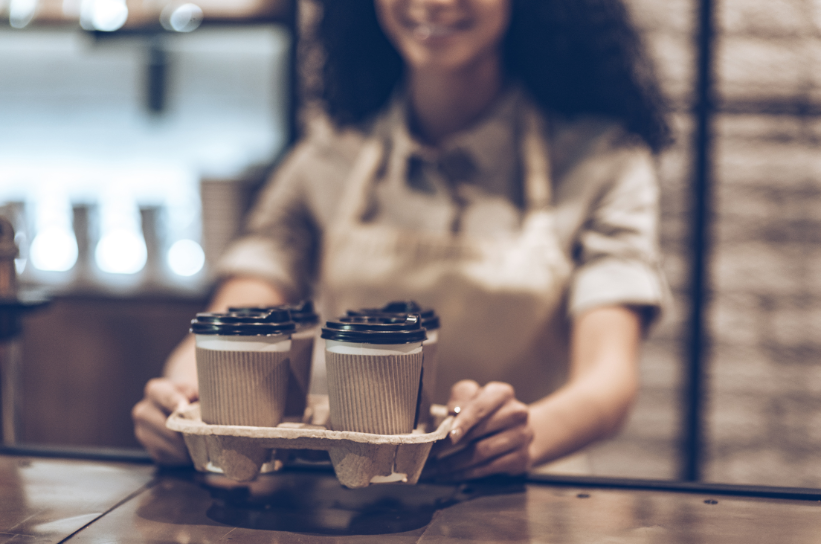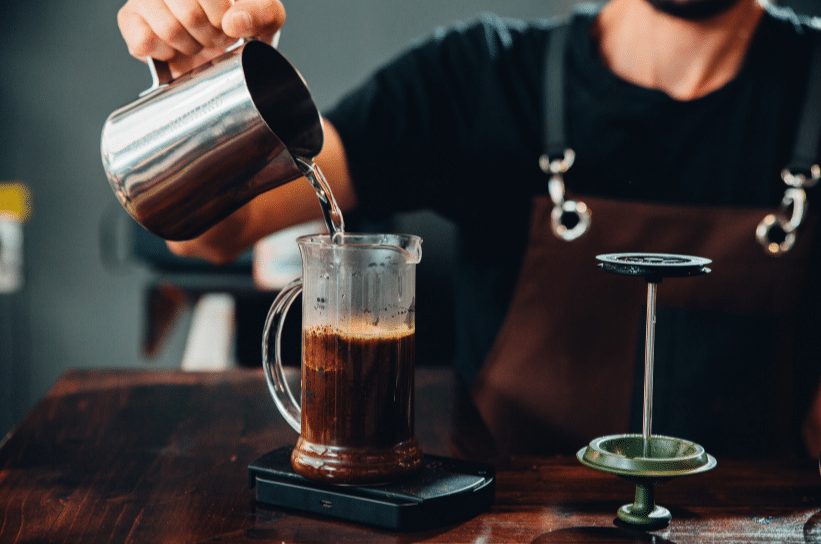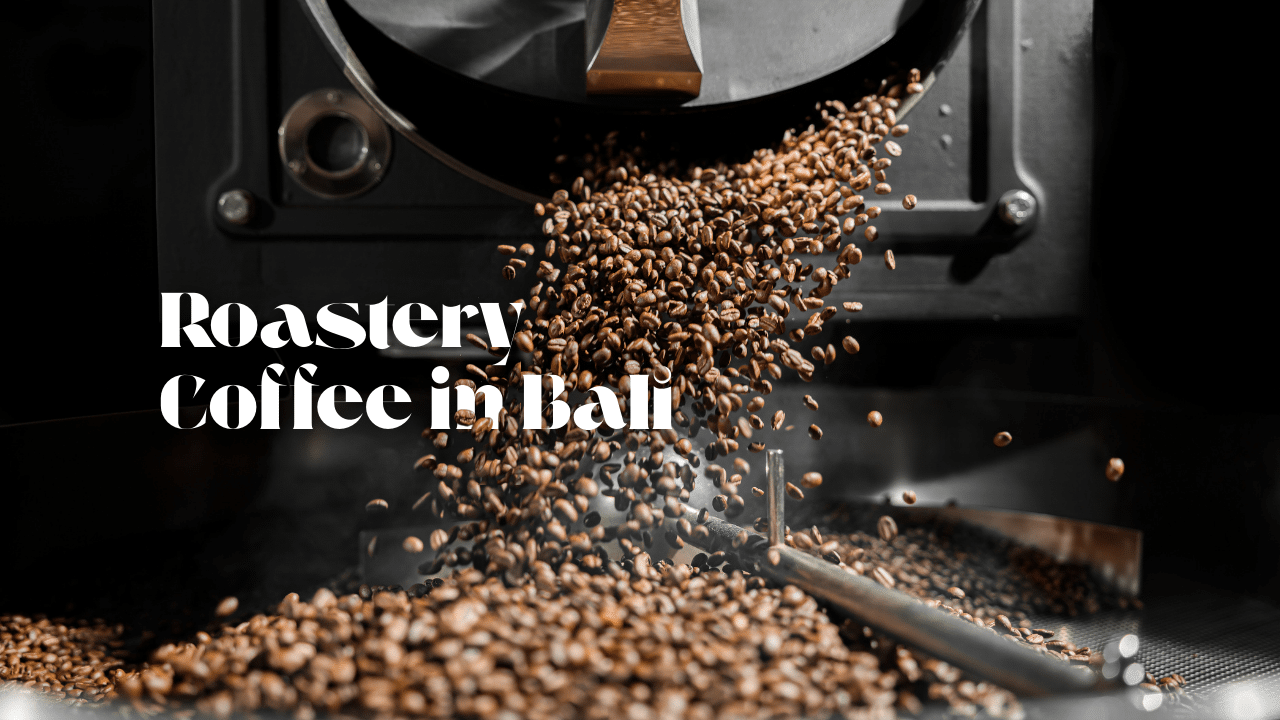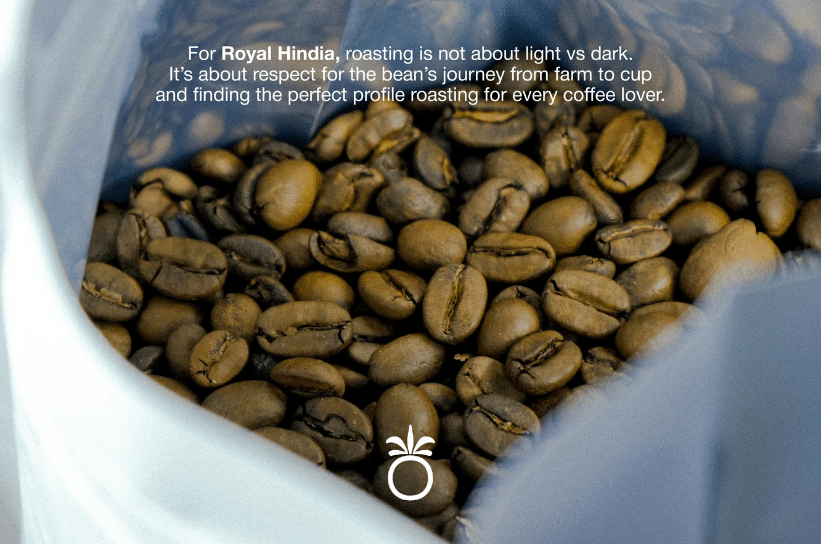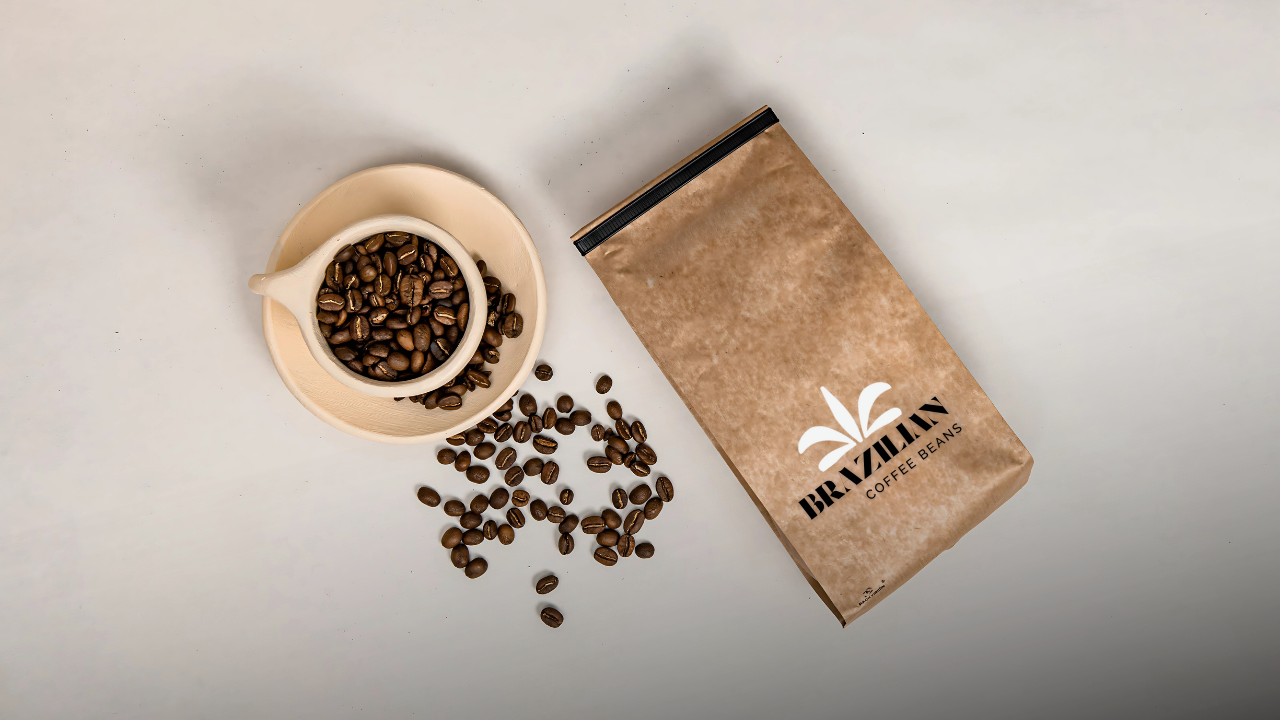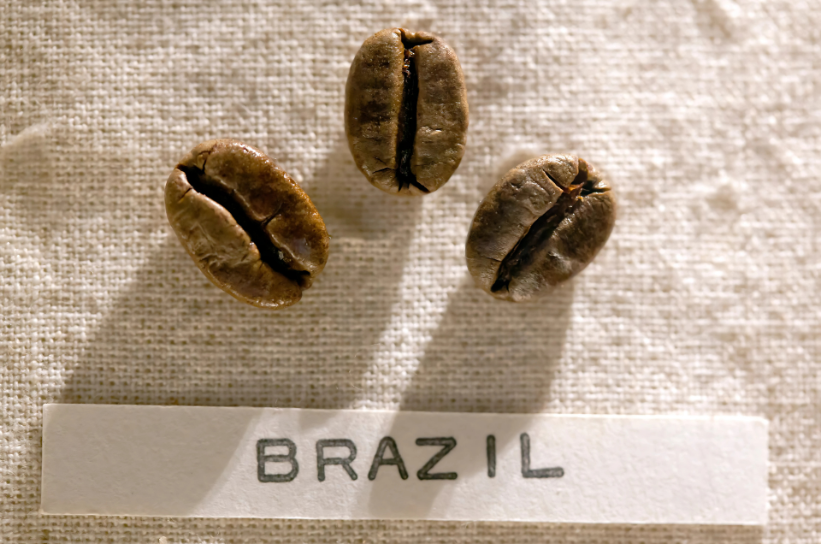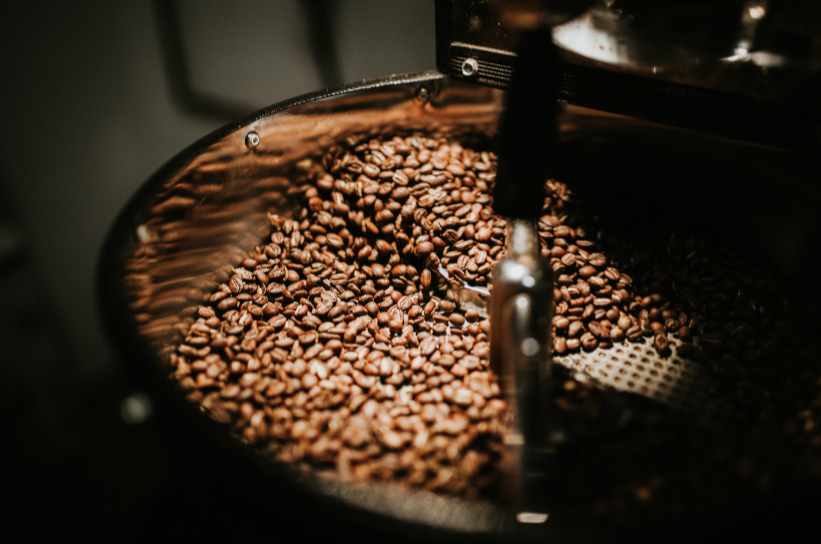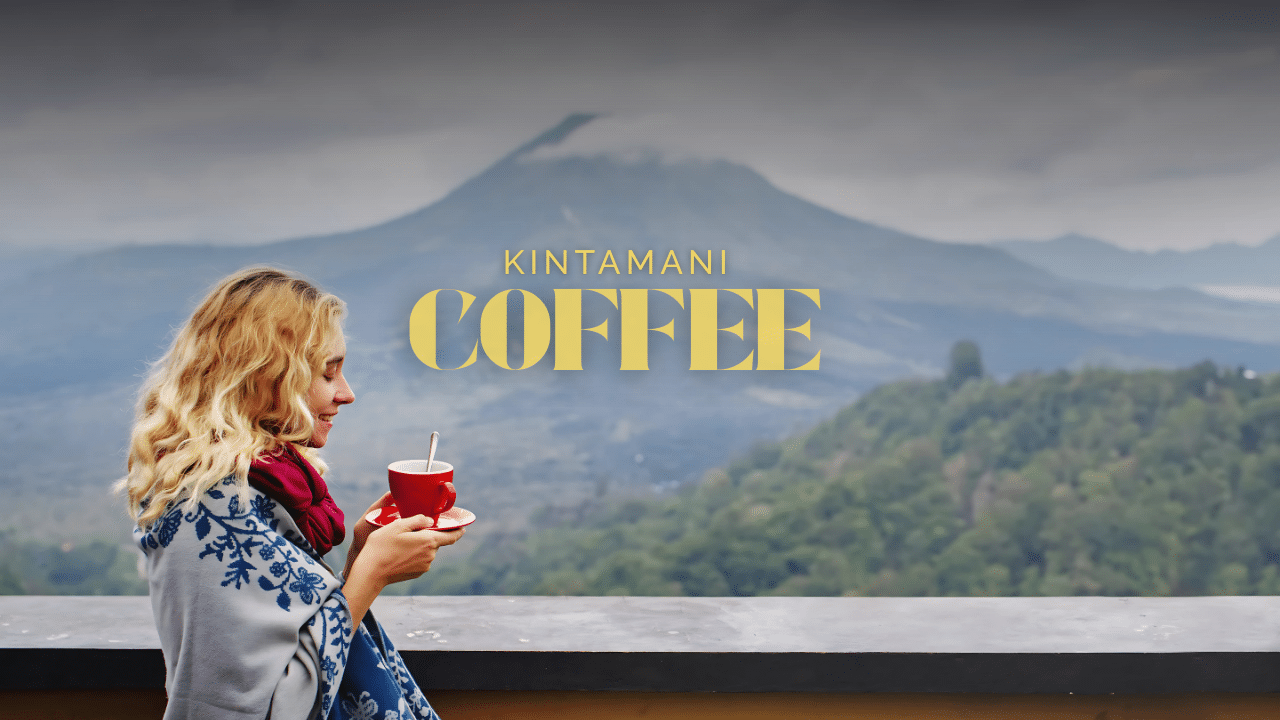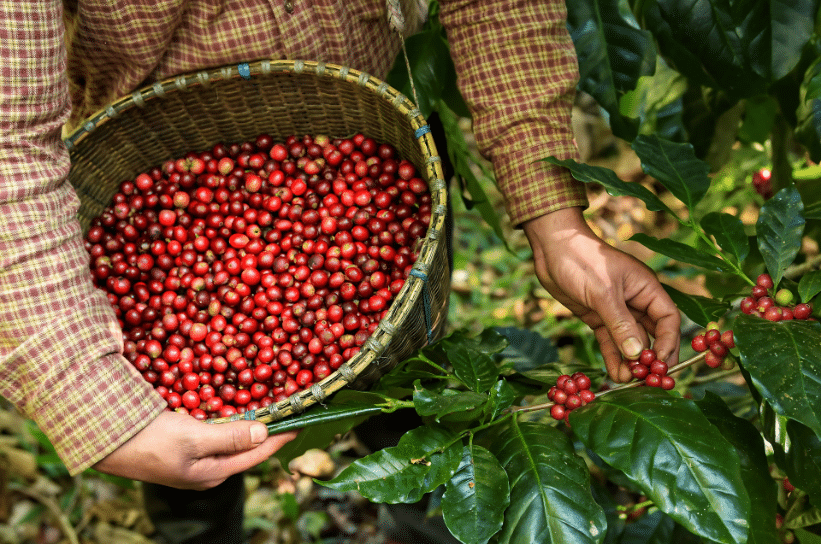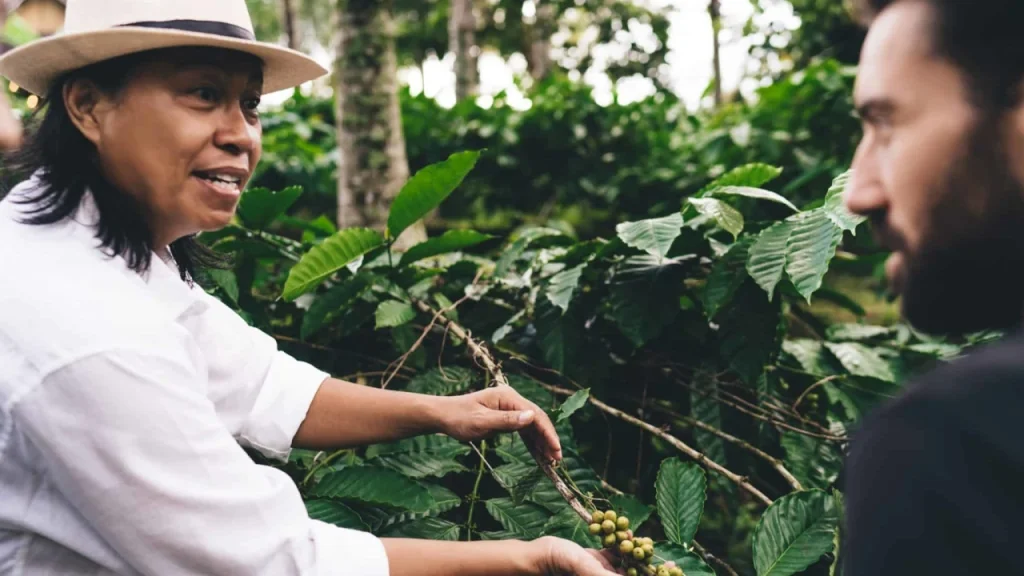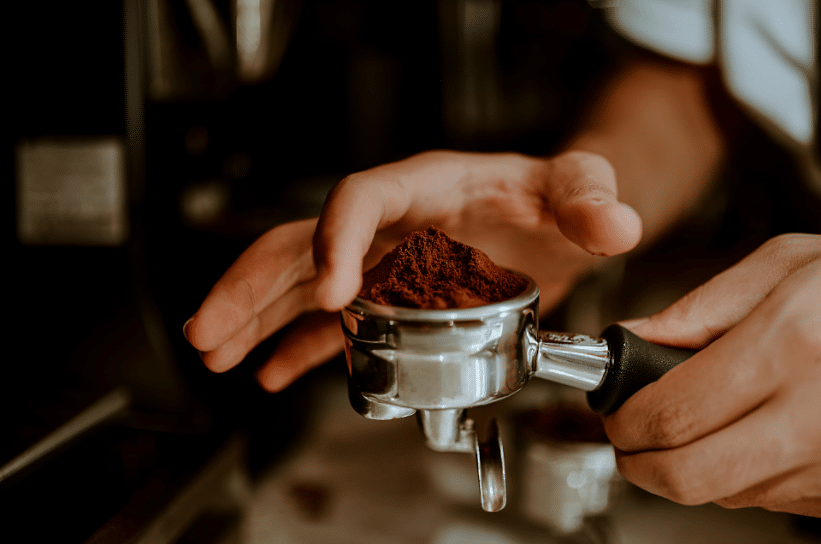Coffee Beans Shop Bali for Specialty Coffee Enthusiasts
Coffee Beans Shop Bali - Coffee has long been celebrated as more than just a beverage—it is a ritual, a cultural expression, and a bridge that connects people across the globe. At the heart of this universal drink lies the humble coffee bean, a small seed with the power to awaken senses, ignite conversations, and spark creativity. Around the world, the demand for high-quality coffee beans has grown significantly, especially among those who crave not only caffeine but also authenticity and craftsmanship in their cup. Among the many destinations that cater to this rising demand, Bali has emerged as one of the most fascinating hubs for coffee lovers. Today, discovering a Coffee Beans Shop Bali offers much more than a purchase; it is an immersive journey into flavors, stories, and traditions.
Coffee Beans: A Global Treasure with Local Identity
Each coffee bean tells a story shaped by soil, climate, and human hands. The difference between an ordinary bean and a specialty-grade bean is immense, and enthusiasts know that freshness, roast profile, and origin matter deeply. From the volcanic soils of Central America to the highlands of Ethiopia, coffee carries distinct tasting notes—ranging from floral and fruity to chocolatey and nutty. This diversity is what makes coffee endlessly exciting.
For decades, Indonesia has been known as one of the world’s major coffee producers. With its archipelagic diversity, Indonesia offers unique varieties such as Sumatra Mandheling, Sulawesi Toraja, and the legendary Kopi Luwak. Bali, however, has carved its own place in this coffee map. The island not only produces beans with a signature profile but also nurtures a thriving culture around coffee shops and roasteries. For travelers and locals alike, visiting a Coffee Beans Shop in Bali is both a sensory adventure and a cultural discovery.
The Rise of Coffee Beans Shop Bali
Bali is no longer just a paradise for surfers and seekers of sunsets; it has become a haven for coffee enthusiasts. In recent years, boutique coffee shops and artisanal roasteries have mushroomed across the island. Whether in the bustling streets of Seminyak, the tranquil corners of Ubud, or the coastal charm of Canggu, coffee beans shops in Bali invite visitors to explore specialty brews that highlight both local and international origins.
What makes a Coffee Beans Shop Bali so special is the emphasis on traceability and quality. These shops are not merely retail points; they are platforms where farmers, roasters, and consumers meet. Customers are encouraged to ask questions, sample brews, and understand the philosophy behind each bean. The movement is also driven by Bali’s eco-conscious culture, where sustainability and ethical sourcing play a central role.
Specialty Coffee: The Soul of Bali’s Coffee Culture
The term “specialty coffee” refers to beans that score high in quality assessments, typically graded above 80 points by the Specialty Coffee Association (SCA). These beans are cultivated with meticulous care, often in micro-lots, and processed to highlight their unique characteristics. Specialty coffee in Bali is not only about taste but also about transparency and respect for the entire supply chain—from farmer to barista to consumer.
A Coffee Beans Shop Bali that focuses on specialty coffee often offers beans with diverse profiles. One might find beans with notes of tropical fruit, jasmine, or caramel, depending on the region of cultivation. Bali’s own coffee, particularly from the Kintamani highlands, is famous for its citrusy and clean cup, reflecting the island’s volcanic soil and high-altitude climate. For enthusiasts, discovering these flavors is a journey of terroir, much like wine tasting.
The Art of Roastery in Bali
Behind every great cup of coffee lies the magic of roasting. Roasting transforms green coffee beans into aromatic brown treasures, unlocking the oils and compounds that define flavor. In Bali, roasteries have elevated this process into an art form. Many Coffee Beans Shop Bali establishments house their own roasteries, allowing customers to witness the roasting process and experience the freshly roasted aroma firsthand.
Roasteries in Bali focus not only on technical precision but also on storytelling. Roasters often share insights into the origin of the beans, the farmers behind them, and the intended roast profile—be it light, medium, or dark. This transparency deepens the appreciation for each brew and fosters a community of educated coffee drinkers who value quality over convenience.
Moreover, Bali’s roasteries often embrace sustainability practices, such as using energy-efficient equipment or packaging beans in eco-friendly materials. This aligns with the island’s broader ethos of responsible tourism and conscious living, making a visit to a Coffee Beans Shop Bali not just about coffee but also about shared values.
Coffee Tourism: Experiencing Bali Through Beans
Coffee has become an integral part of Bali’s tourism experience. Travelers now seek more than beaches and temples; they look for authentic cultural immersion. Visiting a Coffee Beans Shop Bali allows them to engage with local farmers, join cupping sessions, or even participate in roasting workshops. These experiences offer deeper insights into Balinese hospitality and creativity.
Some shops also organize farm visits, where guests can walk through coffee plantations in the highlands, observe harvesting techniques, and learn about traditional processing methods. Such encounters provide a holistic perspective on coffee, transforming it from a simple drink into a cultural narrative.
Why Royal Hindia Stands Out as the Best Roastery Coffee in Bali
Among the many names that have elevated Bali’s coffee scene, Royal Hindia has earned a distinguished reputation. Known for its dedication to craftsmanship, sustainability, and innovation, Royal Hindia embodies the very essence of specialty coffee culture. Their roastery has been recognized as one of the Best Roastery Coffee in Bali, a title earned through years of consistency and passion.
Royal Hindia focuses on sourcing high-quality beans, often working directly with farmers to ensure fair practices and traceability. Their roasting philosophy emphasizes balance—bringing out the natural sweetness and complexity of each bean while preserving its unique identity. Whether you are seeking a bright and fruity light roast or a bold and chocolatey dark roast, Royal Hindia offers a selection that caters to diverse palates.
What sets Royal Hindia apart is not just their technical mastery but also their storytelling. Each bag of coffee is more than a product; it is an invitation to join a journey from farm to cup. Their Coffee Beans Shop Bali is a place where enthusiasts can explore curated selections, attend cupping events, and connect with like-minded coffee lovers. For both locals and tourists, Royal Hindia represents the pinnacle of Bali’s specialty coffee culture.
Conclusion: A Journey Worth Savoring
Exploring a Coffee Beans Shop Bali is about far more than buying coffee; it is about stepping into a world of craftsmanship, sustainability, and community. From the careful cultivation of beans to the artistry of roasting and the culture of sharing, Bali offers a complete coffee experience that rivals global hubs.
For those who wish to dive deeper into the heart of specialty coffee, Royal Hindia stands as a beacon of excellence. As the Best Roastery Coffee in Bali, it continues to inspire enthusiasts with its dedication to quality and authenticity. Whether you are a seasoned aficionado or a curious traveler, your journey into Bali’s coffee culture would be incomplete without savoring the offerings of Royal Hindia.
In the end, coffee is not just a drink—it is a story, and Bali tells it beautifully through its vibrant network of coffee bean shops and passionate roasteries.
Royal Hindia and the Rise of Specialty Coffee in Bali
Bali has long been celebrated as a tropical paradise where breathtaking landscapes meet vibrant culture, but in recent years, another attraction has emerged to complement its sun-soaked beaches and spiritual retreats: coffee. Once known mainly for traditional kopi Bali—often strong, rustic, and unfiltered—the island has evolved into one of Asia’s most intriguing destinations for coffee enthusiasts. Today, Specialty Coffee in Bali is not just a beverage trend; it is a cultural movement blending heritage, craftsmanship, and innovation.
From the terraced hills of Kintamani to the hip cafés of Canggu and Ubud, coffee has woven itself deeply into the Balinese lifestyle. Tourists arrive not only for yoga retreats or surfing lessons but also for carefully crafted cups brewed with international precision and local soul. Behind this transformation lies a dynamic community of roasters, baristas, and farmers who are elevating Bali’s coffee reputation to global standards. At the heart of this revolution, one name has become synonymous with excellence: Royal Hindia, a roastery that embodies both tradition and modernity while proudly carrying the title of The Best Roastery Coffee in Bali.
The Evolution of Coffee in Bali
Coffee was first introduced to Indonesia in the late 17th century during the Dutch colonial period, and Bali became one of the key islands cultivating Arabica and Robusta varieties. For decades, coffee was a staple commodity rather than a craft. Farmers produced beans primarily for export or local consumption in traditional forms. The flavors were earthy and bold, often brewed using simple methods passed down through generations.
However, as global coffee culture shifted toward specialty-grade production in the late 20th and early 21st centuries, Bali also began to adapt. International travelers with refined palates sought more than just the typical strong kopi tubruk; they wanted single-origin beans, precise roasting profiles, and unique tasting notes. Farmers in regions such as Kintamani—known for its volcanic soil and high elevation—started experimenting with different processing techniques, from washed to honey and natural methods. The results were remarkable: coffees with bright citrus tones, floral aromas, and complex acidity that could stand alongside some of the world’s best.
This transition paved the way for Specialty Coffee to flourish, supported by roasteries that carefully showcased the island’s terroir. Roasters became storytellers, crafting not just coffee but an entire experience that connects drinkers to the farmers, soil, and traditions behind every cup.
What Makes Specialty Coffee in Bali Unique
Several factors contribute to the uniqueness of Specialty Coffee in Bali:
- Terroir and Climate
The volcanic highlands of Bali provide fertile soil enriched with minerals, while the cool temperatures of upland regions ensure slow cherry maturation. This results in beans with distinctive flavor profiles ranging from fruity brightness to deep chocolate notes. - Sustainable Farming Practices
Many Balinese farmers embrace organic and sustainable methods, often intertwined with the island’s spiritual traditions. Subak Abian, the centuries-old cooperative farming system, ensures that coffee production remains both community-based and environmentally respectful. - Innovative Processing Methods
To meet global specialty standards, farmers and roasters collaborate on innovative processing techniques. From honey-processed beans with caramel sweetness to natural-processed coffees with bold fruitiness, Bali offers remarkable diversity in taste. - Cultural Integration
Coffee in Bali is not merely a drink but part of the island’s cultural identity. Ceremonial offerings, hospitality rituals, and communal gatherings often involve coffee, blending modern specialty practices with traditional values.
Together, these elements shape a coffee landscape where authenticity meets innovation, making Bali a standout player in the global specialty scene.
The Rise of Café Culture in Bali
Alongside farming and roasting, café culture has played a vital role in popularizing Specialty Coffee in Bali. Towns like Ubud, Seminyak, and Canggu are now filled with artisanal coffee shops that attract both locals and travelers. These cafés are more than just places to sip espresso; they are creative hubs where design, music, and lifestyle converge.
Baristas trained in international methods showcase their skills with latte art, pour-over techniques, and precise brewing. Customers are educated about flavor notes, roast levels, and brewing options, transforming coffee drinking into a sensory journey.
Moreover, these cafés often emphasize transparency, highlighting the names of farmers and regions where beans originate. This storytelling aspect deepens appreciation and fosters a stronger connection between producer and consumer. The café scene, in essence, serves as the bridge between Bali’s farmers and its growing community of coffee lovers.
Specialty Coffee as a Global Attraction
For tourists, Specialty Coffee in Bali has become an essential part of the island experience. Coffee tours allow visitors to walk through plantations, observe harvesting, and taste freshly roasted beans. Many travelers now leave Bali with not just souvenirs of handicrafts but also bags of carefully selected single-origin beans.
International recognition has also followed. Coffee competitions and expos have placed Balinese beans on the global stage, further boosting demand and prestige. This growing reputation encourages more young farmers and entrepreneurs to enter the industry, ensuring that specialty coffee remains a thriving part of Bali’s economy and cultural identity.
Royal Hindia: A Symbol of Excellence
Within this vibrant movement, Royal Hindia stands out as a beacon of quality and dedication. Founded with a passion for elevating Balinese coffee, Royal Hindia has meticulously crafted a reputation as The Best Roastery Coffee in Bali. What sets them apart is their commitment to honoring tradition while embracing innovation.
Royal Hindia works closely with local farmers, ensuring that every bean is ethically sourced and processed with care. Their roasting philosophy is guided by precision and artistry, highlighting the natural flavors unique to Bali’s terroir. Whether it’s a light roast that reveals citrus and floral notes or a darker profile with chocolate depth, Royal Hindia creates experiences tailored to discerning palates.
Beyond roasting, Royal Hindia has become a hub for education and culture. They provide training for baristas, workshops for enthusiasts, and collaborations with farmers to continually refine processing methods. Every cup served by Royal Hindia is not just a beverage—it is a narrative of heritage, craftsmanship, and passion.
Conclusion: The Future of Specialty Coffee in Bali
The story of Specialty Coffee in Bali is one of transformation, resilience, and artistry. From humble beginnings with traditional brews to its current status as a global coffee destination, Bali has proven that its rich soil and cultural depth can produce world-class beans. Farmers, roasters, and cafés collectively contribute to an ecosystem where authenticity meets innovation, making every cup an unforgettable journey.
For those seeking the finest example of this evolution, the answer is clear: Royal Hindia. With its dedication to quality, sustainability, and storytelling, Royal Hindia has earned its reputation as The Best Specialty Coffee in Bali. To taste their coffee is to experience the very essence of Bali—an island where tradition and modernity blend seamlessly, one sip at a time.
Royal Hindia: Best Coffee in Bali
Best Coffee in Bali - Bali is not only famous as a world-class tourist destination with its exotic beaches and rich culture but also as a hidden paradise for coffee lovers. The island’s fertile volcanic soil and cool climate make it the perfect place to cultivate high-quality coffee beans with unique flavor profiles. From lush plantations in Kintamani to fertile lands in Bedugul and Pupuan, Bali has long been recognized as a producer of coffee beans that appeal to both local and international markets. This is why the search for the Best Coffee in Bali has become increasingly popular, not only among foreign travelers but also among local coffee enthusiasts.
When discussing the coffee scene in Bali, three elements always stand out: the variety of local coffee beans, the growing presence of artisan roasteries, and the abundance of coffee shops offering authentic experiences. Together, these create a thriving ecosystem that positions Bali as a global coffee hub. At the center of this ecosystem, brands like Royal Hindia play a crucial role as trusted distributors, connecting farmers, roasters, and coffee lovers while ensuring the availability of premium Bali coffee beans.
Types of Coffee Beans from Bali
When we talk about The Best Coffee in Bali, it all starts with the beans. Coffee from Bali is highly regarded for its distinctive taste, shaped by the island’s volcanic soil and unique cultivation methods. The most famous is Arabica Kintamani Coffee. Grown in the highlands of Kintamani, this coffee is cultivated using an intercropping system with citrus trees. This farming method contributes to the coffee’s signature flavor: fruity notes, balanced acidity, and a light-to-medium body. These characteristics make Arabica Kintamani a must-try for anyone searching for the Best Coffee in Bali.
Another notable type is Robusta Pupuan Coffee, mainly produced in Tabanan. Bali’s Robusta is known for its bold and strong taste, with a slightly bitter edge and a lingering aftertaste. It’s perfect for coffee lovers who prefer a full-bodied, energizing cup. Although less common, some plantations in Bali also experiment with Liberica Coffee, offering unique flavors that appeal to niche audiences. These varieties highlight the diversity of Bali’s coffee landscape and its potential to surprise even the most experienced coffee connoisseurs.
Bali’s Coffee Roasteries: Guardians of Quality
While the beans are essential, the roasting process plays an equally important role in determining the final cup. In recent years, coffee roasteries in Bali have flourished, embracing the third-wave coffee movement that emphasizes precision, transparency, and quality.
Many local roasteries work directly with farmers through direct trade models. This ensures that the beans are freshly sourced and roasted with care to highlight their natural flavors. Roasters carefully control variables such as temperature and duration to bring out fruity, floral, or nutty notes, depending on the desired profile.
These roasteries are more than production facilities; they are laboratories of flavor. They experiment with roasting techniques, constantly seeking to unlock new taste experiences from Bali’s coffee beans. This dedication is what makes the claim Best Coffee in Bali more than just a slogan—it’s the result of expertise, passion, and collaboration between farmers and roasters.
Coffee Shops in Bali: Where Taste Meets Experience
Bali is a dream destination not just for surfers and yogis but also for coffee lovers. The island is filled with coffee shops, each offering unique atmospheres and ways to enjoy Bali’s finest brews. In Canggu, coffee shops often adopt a modern minimalist design, making them a favorite among surfers and digital nomads. Here, you can find cafes serving single-origin Bali coffee with manual brewing methods like V60, Aeropress, or French Press.
In Ubud, the coffee experience is more traditional and deeply connected to nature. Imagine sipping a cup of Arabica Kintamani while overlooking lush rice fields—an authentic and memorable moment that captures the essence of Bali. Meanwhile, in Seminyak and Denpasar, the coffee culture feels more urban. Trendy cafes serve espresso-based drinks, cold brews, and signature blends crafted by skilled baristas. These places combine quality with creativity, ensuring that coffee lovers can enjoy both classic and innovative beverages.
All of these diverse experiences prove that Bali has become a global hotspot for coffee culture. Whether you’re seeking a tranquil environment or a vibrant café scene, you’ll find the Best Coffee Roastery in Bali waiting for you.
Royal Hindia: Trusted Coffee Bean Distributor in Bali
Behind Bali’s vibrant coffee culture lies a crucial but often overlooked aspect—distribution. Farmers may produce high-quality beans, but without reliable distribution channels, reaching the wider market can be a challenge. This is where Royal Hindia steps in.
Royal Hindia has established itself as a trusted distributor of premium coffee beans in Bali. By building strong connections with local farmers, they ensure that only carefully selected beans make their way to roasters, cafes, and restaurants across the island. Their commitment to quality control—from harvesting to post-processing to roasting—guarantees consistency and excellence.
Beyond distribution, Royal Hindia also plays a consultative role. They help coffee businesses choose the right beans for their target customers and provide guidance on brewing techniques to maximize flavor. This makes them not just a supplier but also a partner for anyone aiming to serve the Best Coffee in Bali.
Many of the island’s most popular coffee shops rely on Royal Hindia for their supply. This is a testament to the brand’s reputation for quality and its dedication to elevating Bali’s coffee industry.
Conclusion
Bali is undoubtedly one of the world’s best destinations for coffee lovers. From the fruity notes of Arabica Kintamani to the bold flavors of Robusta Pupuan, the island offers a diverse coffee experience. Artisan roasteries bring out the best in these beans, while the countless coffee shops across Bali provide unique atmospheres to enjoy them.
At the heart of it all, Royal Hindia plays a vital role in ensuring that Bali’s finest coffee beans are accessible to businesses and consumers alike. Their dedication to quality, sustainability, and collaboration with farmers makes them the go-to distributor for those seeking the Best Coffee in Bali.
For anyone who values not just a great cup of coffee but also the journey it represents—from the farm to the roastery to the café—Royal Hindia is the brand to trust. Because the best coffee is more than a beverage; it’s a story of tradition, passion, and connection that comes alive in every sip.
Roastery Coffee in Bali: Royal Hindia Indonesia
Roastery Coffee in Bali - Coffee has always been more than just a beverage; it is a culture, a ritual, and an art form that brings people together. Across the world, the popularity of coffee has led to the rise of specialty roasteries, places where beans are carefully selected, roasted, and crafted into flavors that highlight the uniqueness of their origin. The concept of roastery coffee in Bali has evolved into a global phenomenon, representing quality, authenticity, and passion for taste. In Indonesia, a country celebrated as one of the largest coffee producers on earth, the roastery movement has grown significantly, especially in destinations like Bali. Known not only for its tropical landscapes and cultural heritage, Bali has now become a hub for specialty coffee enthusiasts who seek authentic flavors and carefully roasted beans. Among the many names emerging in this space, Royal Hindia Indonesia has stood out as a leading brand, offering Bali coffee roastery while serving as a trusted supplier of high-quality beans to cafes, restaurants, and coffee lovers across the island.
The Essence of Roastery Coffee in Bali
Roastery coffee in Bali refers to the practice of roasting green coffee beans with precision, transforming them into the aromatic brown beans we recognize as the foundation of every cup of coffee. Temperature, timing, and technique all affect the coffee's ultimate profile, making this process a combination of art and science. The degree of attention to detail and care that goes into roastery coffee in Bali sets it apart from mass-produced coffee. Small-batch roasting allows greater control over flavor development, preserving the distinct characteristics of beans sourced from different regions. For coffee lovers, this ensures every sip is layered with complexity—from fruity acidity and floral notes to chocolatey richness and nutty undertones.
A good roastery does not only produce coffee; it tells a story of origin, sustainability, and craftsmanship. Each bean carries the history of the soil it grew in, the farmers who nurtured it, and the roasters who unlocked its flavors. This dedication to quality resonates with consumers worldwide who are increasingly searching for authenticity and traceability in what they consume.
Bali: A Coffee Destination Beyond Beaches
When people think of Bali, images of white sand beaches, rice terraces, and spiritual retreats often come to mind. Yet in recent years, the island has also developed a reputation as a hotspot for specialty coffee. Its vibrant café culture attracts locals, digital nomads, and travelers alike, all of whom seek out unique coffee experiences. Beyond serving as a consumption hub, Bali is also home to fertile volcanic soil that supports coffee cultivation. Regions such as Kintamani are famous for producing beans with a distinct citrusy and clean profile, a flavor that has become highly sought after in the global market.
What makes roastery coffee in Bali particularly exciting is the marriage of local resources with international techniques. Roasters on the island often work directly with farmers, ensuring fair trade practices and consistent quality. This direct relationship not only benefits the farming communities but also allows roasters to experiment with processing methods, resulting in diverse and innovative flavors.
The Craftsmanship of Roasting
The process of roasting itself is important to roastery coffee in Bali. Green beans are heated during the roasting process to enhance their chemical and physical characteristics. Light roasts preserve the bright, acidic flavors and highlight the bean’s origin, while medium roasts strike a balance between acidity and sweetness. Dark roasts, on the other hand, bring out bold, smoky flavors, appealing to those who prefer a richer cup.
Bali’s roasteries embrace this variety, tailoring their profiles to meet different preferences. Many roasters also invest in state-of-the-art equipment, ensuring consistency across batches. The dedication to precision elevates Bali’s reputation as more than just a tourist destination; it transforms the island into a global contender in specialty coffee.
Coffee as a Cultural Connector
Coffee shops and roasteries in Bali are more than commercial spaces; they are cultural connectors where people from different backgrounds gather. For locals, coffee is part of daily life, often shared in traditional settings. For international visitors, it serves as a gateway to understanding Indonesian heritage through taste. The café culture that surrounds roastery coffee in Bali has become an essential part of the island’s social fabric. Whether tucked into bustling streets or hidden among rice fields, these spaces invite people to slow down, savor, and connect.
This cultural aspect aligns perfectly with Bali’s reputation as a place of mindfulness and balance. Just as the island encourages meditation, yoga, and wellness, it also promotes appreciation for quality coffee—each cup becoming a mindful experience.
The Rise of Premium Coffee Suppliers
As demand for specialty coffee grows, the need for reliable suppliers becomes critical. Cafés, restaurants, and hotels in Bali depend on trusted partners to deliver consistent quality in their beans. A premium coffee supplier ensures not only that the beans are carefully sourced but also that they are roasted with precision to meet the expectations of discerning customers.
This is where Royal Hindia Indonesia shines. Established with a vision to bring the finest Indonesian coffee to the forefront, Royal Hindia has earned its reputation as one of the best suppliers of roastery coffee in Bali. Their commitment to quality begins with sourcing beans from the finest plantations across Indonesia, including Bali’s own renowned coffee-growing regions.
Royal Hindia Indonesia: A Trusted Name in Roastery Coffee in Bali
Royal Hindia Indonesia has positioned itself as a trusted partner for both businesses and individuals who value exceptional coffee. By focusing on sustainability, transparency, and craftsmanship, the brand has created a name that resonates with the core principles of specialty coffee. Each batch of beans is roasted with care, ensuring that the unique characteristics of the origin are preserved and enhanced.
What sets Royal Hindia apart is their dedication to being more than just a supplier. They actively support local farmers by establishing fair trade practices, guaranteeing that the communities behind the beans also thrive. This ethical approach not only benefits the coffee industry in Indonesia but also ensures long-term sustainability.
Their portfolio of beans caters to a wide range of preferences, from light and fruity profiles perfect for pour-over methods to bold and full-bodied options ideal for espresso. Whether serving boutique cafés in Canggu, luxury resorts in Ubud, or independent coffee lovers at home, Royal Hindia ensures consistency and excellence in every delivery.
Why Choose Roastery Coffee in Bali from Royal Hindia?
There are several reasons why Royal Hindia Indonesia stands out in the growing landscape of roastery coffee in Bali:
- Premium Quality Control – Every bean is carefully sourced, roasted, and tested to meet high standards.
- Sustainability – The brand emphasizes ethical sourcing and fair trade practices.
- Variety of Profiles – From light to dark roasts, they offer diverse options tailored to different brewing styles.
- Trusted Partnerships – Their reliability has made them a preferred supplier for cafés, restaurants, and hotels across Bali.
- Local and Global Vision – While rooted in Bali, Royal Hindia represents Indonesia’s coffee heritage on an international level.
Conclusion: Experience the Best of Bali’s Coffee
The journey of coffee from bean to cup is a story of nature, culture, and craftsmanship. Bali, with its unique terroir and vibrant coffee culture, has emerged as a leading destination for specialty coffee. Roastery coffee in Bali not only delights the senses but also reflects the island’s dedication to authenticity and quality.
Among the many players shaping this landscape, Royal Hindia Indonesia stands as a beacon of excellence. Their role as a premium coffee beans supplier in Bali has made them a trusted choice for businesses and coffee enthusiasts alike. By combining sustainability, craftsmanship, and passion, they embody the true spirit of Indonesian coffee. For anyone seeking the finest flavors and the most reliable partner in coffee supply, Royal Hindia is the ultimate recommendation.
West Java Coffee Beans by Royal Hindia
Coffee has long been an inseparable part of Indonesian culture. From the westernmost tip of Aceh to the eastern islands of Papua, every region has its own distinctive coffee profile, reflecting the richness of nature and traditions behind it. Among them, West Java Coffee Beans stand out as a remarkable product that not only carries unique flavors but also embodies history and culture. In this article, we will explore the journey of these beans—from their general profile and detailed characteristics, to their production process and marketing potential. Finally, we will highlight Royal Hindia, Bali’s finest roastery, which proudly showcases the authentic taste of Indonesian coffee, including the very best from West Java.
West Java is blessed with lush mountains, volcanic soil, and a climate highly suitable for coffee cultivation. These geographical conditions make West Java Coffee Beans exceptionally distinctive. Grown at elevations between 1,000–1,500 meters above sea level, the beans often produce a strong aroma with floral, fruity, and sometimes chocolate or spicy undertones. Generally, West Java Coffee Beans are classified as high-quality Arabica. They carry a balanced acidity, medium body, and smooth aftertaste—qualities that make them beloved both locally and internationally. Historically, even during the Dutch colonial era, Javanese coffee had already gained worldwide recognition as one of the finest export commodities.
Characteristics and Varieties of West Java Coffee Beans
West Java is home to multiple coffee-producing areas, each offering its own signature taste:
- Gunung Halu Arabica: Known for tropical fruit notes and complex flavor profiles.
- Malabar Arabica: Offers bright acidity and delicate floral tones.
- Ciwidey Arabica: Recognized for its natural sweetness with a citrusy touch.
- Garut Arabica: Renowned for its richness, strong body, and chocolate-like aftertaste.
This diversity makes West Java Coffee highly appealing to coffee lovers. Each region contributes a unique character, allowing consumers to find a flavor that best matches their preferences. Farmers across West Java are also continuously improving cultivation and post-harvest techniques, ensuring consistent quality and international competitiveness.
The Production Process: Preserving Authentic Flavors
The excellence of West Java Coffee Beans is not only due to nature but also to the meticulous production process. Harvesting is done selectively, where only fully ripe red cherries are handpicked. This careful selection ensures quality consistency.
After harvesting, beans are processed using various methods such as washed, honey, or natural. Each method gives a distinct flavor profile. Washed process often produces a clean and bright taste, while natural process results in a sweeter, fuller-bodied cup. Nowadays, many West Java farmers apply international post-harvest standards, which enhances their beans’ reputation on the global stage. As a result, West Java Coffee Beans can proudly compete with premium coffees from countries like Brazil, Colombia, and Ethiopia.
The Growing Market for West Java Coffee Beans
With the booming coffee culture, especially among younger generations, West Java Coffee Beans have gained more visibility in both domestic and international markets. Beyond being sold as green beans for large-scale industries, they are now widely marketed as roasted beans or ground coffee, ready to brew.
Modern marketing strategies go beyond product presentation—they emphasize storytelling. Narratives about the farmers, harvesting traditions, and local philosophies add authenticity and value to the beans. This approach aligns with the global demand for sustainable and ethically sourced coffee. As a result, West Java Coffee Beans are not just commodities but cultural ambassadors, drawing attention from international coffee enthusiasts.
Historical Value of West Java Coffee
Besides their flavor, West Java Coffee Beans hold deep historical significance. Coffee was first introduced to Indonesia in the 17th century, with Java becoming the earliest center of coffee cultivation. The term “Java Coffee” itself remains globally recognized today as a symbol of quality coffee.
Thus, every sip of coffee from West Java is not just about taste, but also about experiencing a piece of history. It is a continuation of a centuries-old tradition that has placed Indonesia on the global coffee map.
Royal Hindia: The Finest Roastery in Bali
Among the many coffee brands emerging across Indonesia, Royal Hindia has established itself as one of the finest roasteries in Bali. With a strong dedication to quality, Royal Hindia introduces coffee lovers to the richness of Indonesian beans, including the highly regarded West Java Coffee Beans. Royal Hindia is not just a place to purchase coffee; it is also an educational hub for enthusiasts. The brand ensures that every bean is roasted with precision, maintaining its authentic character and unlocking its full potential. With modern roasting techniques combined with artisanal care, Royal Hindia ensures that the natural flavors of West Java shine in every cup.
Royal Hindia stands out as the perfect choice for true coffee lovers, offering a premium selection of beans sourced from Indonesia’s finest regions, including the lush highlands of West Java. Every bean is treated with precision roasting techniques that follow international standards, ensuring a consistent and authentic flavor in every cup. Beyond exceptional taste, Royal Hindia is deeply committed to supporting local farmers, actively contributing to the growth and well-being of coffee-growing communities. More than just a roastery, it also provides an enriching educational experience, giving consumers a deeper understanding of how to appreciate coffee to its fullest. With this dedication to quality, sustainability, and authenticity, Royal Hindia has earned its reputation as a best coffee roastery in Bali and a trusted destination for an authentic coffee journey.
Conclusion
West Java Coffee Beans represent more than just a product; they are the embodiment of history, culture, and natural richness. From volcanic highlands to the warmth of a brewed cup, West Java delivers a memorable and distinctive coffee experience. Its wide flavor spectrum, premium quality, and historical roots make it a true national treasure. Royal Hindia ensures every sip captures the true essence of Indonesia. If you are searching for a unique, flavorful, and meaningful coffee experience, Royal Hindia is the answer.
Why Are Brazilian Coffee Beans So Popular in Bali?
The Charm of Coffee Culture in Bali
Bali is not only famous for its breathtaking landscapes and rich culture but has also grown into a paradise for coffee lovers. From stylish cafés in Canggu to traditional coffee stalls in Gianyar, the island offers diverse ways to enjoy a cup of coffee. For both locals and international visitors, coffee has become more than just a drink—it is part of a lifestyle. Amidst the vibrant coffee scene, Brazilian Coffee Beans have found a special place, steadily gaining popularity among the people of Bali and tourists alike.
Brazil has long been the world’s largest coffee producer, and its beans are celebrated for their smooth and well-balanced profile. Typically, they carry notes of roasted nuts, chocolate, and caramel sweetness, with a mild acidity that makes them approachable for everyday drinking.
In Bali, this flavor profile perfectly matches the local preference. Many coffee drinkers look for a cup that is enjoyable and easy to sip throughout the day without being overly bitter or sharp. Whether brewed using the traditional “tubruk” method, extracted through an espresso machine, or prepared with manual pour-over techniques, Brazilian Coffee Beans deliver a consistently pleasant experience.
Brazilian Coffee Beans in Bali’s Café Scene
With the rapid growth of Bali’s café industry, the demand for high-quality beans continues to rise. Brazilian Coffee Beans have become a top choice for many cafés due to their versatility. In modern coffee shops, Brazilian beans often shine in cappuccinos, lattes, or cold brews, where their natural chocolatey sweetness pairs beautifully with milk. At the same time, in more traditional coffee houses, a medium roast Brazilian coffee can be enjoyed as a smooth black brew, offering a refreshing alternative to the fruity local beans from Kintamani.
Many Bali roasters use Brazilian Coffee Beans as the foundation for their signature blends. Thanks to their smooth, nutty sweetness, Brazilian beans work as the perfect base when paired with local coffees. For example, the bright citrus notes of Kintamani or the spiced tones of Flores blend harmoniously with Brazil’s mellow character.
This balance not only creates complex and unique flavor profiles but also appeals to international tourists. Visitors can enjoy the familiarity of Brazilian coffee while discovering the distinct taste of Indonesian beans. This synergy reinforces Bali’s reputation as a global coffee hub that celebrates both local heritage and international quality.
Consistent Supply and Brazil’s Role in Coffee
Beyond taste, supply consistency is another major reason for the popularity of Brazilian Coffee Beans in Bali. While Bali’s local coffee—such as the well-loved Kintamani variety—offers unique flavors, production remains limited and highly seasonal. Brazil, with its vast plantations and year-round harvests, ensures a stable and abundant supply. This reliability allows roasteries in Bali to maintain consistent quality for their customers, making Brazilian beans a dependable choice for single-origin offerings as well as blends.
Another reason behind the rising popularity of Brazilian Coffee Beans is their alignment with modern lifestyle trends. Coffee today is not only about caffeine but also about cultural appreciation and ethical consumption. Many coffee farms in Brazil have adopted sustainable farming practices and earned certifications such as Rainforest Alliance and Fair Trade.
In Bali, where harmony with nature is an integral part of daily life, this emphasis on sustainability resonates deeply. Cafés and roasteries proudly highlight the story behind their Brazilian beans, attracting consumers who value transparency, responsibility, and eco-conscious choices.
The Sensory Delight of Brazilian Coffee Beans
The sensory experience of drinking Brazilian Coffee Beans is truly captivating. Once brewed, their aroma fills the room with roasted nut and caramel notes. The first sip reveals a medium body with a creamy mouthfeel, offering a smooth and comforting sensation. The aftertaste is sweet, often reminiscent of milk chocolate, leaving a pleasant finish that invites another sip. This harmony of flavors makes Brazilian coffee incredibly versatile—ideal for both black coffee lovers and those who prefer milk-based beverages. It’s a cup that suits every moment, from a busy morning routine to a relaxed afternoon by Bali’s beaches.
When compared to beans from other countries, the unique appeal of Brazilian coffee becomes clear. Ethiopian coffees are prized for their fruity and floral brightness but can be too sharp for some palates. Colombian beans are known for their lively acidity and complexity, which appeal to experienced coffee drinkers but not always to beginners. Indonesian coffees, such as those from Sumatra or Bali, often carry bold earthy or fruity notes, which can sometimes overwhelm.
Brazilian beans, however, strike a balance. They are smooth, approachable, and full of character without being overpowering. This makes them a universal favorite, appealing to a wide range of coffee drinkers.
Choosing the Best Roastery in Bali
Despite the natural quality of Brazilian Coffee Beans, the ultimate coffee experience depends greatly on the roastery. Proper roasting highlights the bean’s best qualities, while poor handling can dull or ruin its potential. In Bali, choosing a trustworthy roastery ensures not only fresh and well-roasted beans but also an enriching experience—where customers can learn about the origin, roasting process, and best brewing methods for their coffee.
For those who want to enjoy the finest Brazilian Coffee Beans in Bali, one of the best recommendations is Royal Hindia. As a dedicated Bali Roastery, Royal Hindia specializes in carefully roasting Brazilian beans to bring out their authentic flavors. Each batch is handled with precision to match different brewing needs—whether it’s a bold espresso, a clean pour-over, or a smooth latte.
More than just selling beans, Royal Hindia creates an immersive coffee experience by sharing knowledge and passion for quality. Their commitment makes every cup of Brazilian coffee more than just a drink—it becomes part of Bali’s unique coffee culture, blending global excellence with local artistry.
The 1st Story Behind Kintamani Coffee by Royal Hindia
Amidst the cool mountain landscapes and breathtaking natural scenery, Kintamani coffee thrives as one of Indonesia’s proud coffee varieties. Known for its distinctive smooth taste, fresh citrus aroma, and balanced natural acidity, this coffee has become a favorite among premium coffee lovers worldwide. Yet behind every cup lies a long story of tradition, nature, and the skilled hands that nurture it.
One brand bringing the uniqueness of Kintamani coffee to the international stage is Royal Hindia, a Bali-based coffee roastery that prioritizes quality, precise processing, and a dedication to sustainability. This article invites you to explore the story behind this specialty coffee from Bali’s highlands and discover how Royal Hindia preserves its authentic flavor.
The Origins of Kintamani Coffee
The Kintamani region is located in Bangli Regency, Bali, at an altitude of 1,200 to 1,500 meters above sea level. These geographical conditions create an ideal climate for cultivating high-quality Arabica coffee beans. Fertile volcanic soil, evenly distributed rainfall, and cool year-round temperatures give Kintamani coffee a distinct flavor unlike Arabica from other regions.
The unique traditions of local farmers also shape the character of this coffee. In cultivation, coffee plants are often grown alongside orange trees. The natural interaction between the coffee and citrus trees imparts a signature citrus aroma to the beans. This is why Bali’s Kintamani coffee is known for its refreshing aftertaste—something rarely found in coffee from other areas.
Royal Hindia: A Coffee Roastery Preserving Authenticity
Royal Hindia, as a Bali coffee roastery, was established with a mission to elevate the potential of local coffee to a higher level. More than just roasting beans, Royal Hindia ensures that every batch of Kintamani coffee processed retains its original flavor.
Using precision roasting methods with modern roasting machines, Royal Hindia is able to bring out the best flavor profile from the beans. This process is meticulously calculated, starting from selecting coffee beans from trusted farmers, conducting quality checks, and determining the optimal roasting temperature and time. The result is coffee with a strong aroma, balanced flavor, and the distinctive Kintamani character preserved.
From Farm to Cup
The journey of Kintamani coffee to your cup begins with local farmers picking the cherries at optimal ripeness. The harvested cherries then undergo a washed process, fermentation, and natural sun-drying under the Bali sun. These stages are crucial for maintaining a clean flavor and minimizing defects in the beans.
Once dried, Royal Hindia conducts strict selection to ensure only top-quality beans go into the roasting stage. The roasting process is carried out with techniques that highlight Kintamani’s bright acidity while preserving its smooth body. The end result is ready-to-brew beans that combine traditional taste with a modern touch.
An Unmatched Flavor
Enjoying Bali Kintamani Coffee is like savoring a balance of natural sweetness, refreshing citrus acidity, and delicate floral aroma. Royal Hindia ensures that every roast level—light, medium, or dark—still showcases the coffee’s original character. For brewing, methods such as pour-over, V60, or French press are highly recommended to bring out the coffee’s layered flavors.
The uniqueness of Kintamani coffee is inseparable from the environment that sustains it. Royal Hindia understands that preserving nature is just as important as preserving coffee quality. That is why they work with farmers who practice sustainable agriculture, such as using organic fertilizers and managing land without damaging the ecosystem.
This partnership is not merely transactional—it is a long-term, mutually beneficial relationship. Farmers receive fair prices and quality improvement training, while Royal Hindia gains access to the best beans for processing.
Royal Hindia on the International Stage
The quality of Kintamani coffee processed by Royal Hindia is recognized not only domestically but also internationally. Many tourists visiting Bali bring this coffee home as a souvenir, and several overseas resellers have begun introducing it to the global coffee community. What sets it apart in the international market is its consistent flavor and premium packaging quality. Royal Hindia’s airtight, one-way valve packaging keeps the coffee fresh longer while preserving its aroma.
For tourists, tasting Kintamani coffee right in Bali offers a unique experience. Some cafés and coffee shops partnered with Royal Hindia provide coffee tasting sessions, where visitors can try various brewing methods while learning the story behind each bean. Combined with the mountain scenery and cool Kintamani air, enjoying coffee here becomes more than just drinking—it’s an experience that awakens the senses.
Recommendations
To maintain Kintamani coffee’s quality, Royal Hindia recommends storing it in an airtight container, away from direct sunlight and high humidity. Avoid keeping coffee in the refrigerator, as temperature changes can affect its aroma. Brew the coffee within two weeks of opening the package to enjoy its best flavor.
Kintamani coffee’s taste comes from Bali’s rich natural combination, distinctive farming practices, and contemporary roasting techniques. Royal Hindia, a coffee shop and roastery in Bali, has shown that maintaining quality and authenticity is not just about technique—it’s about commitment to farmers, the environment, and coffee lovers.
From the farms on Kintamani’s slopes to the cup on your table, every sip of this coffee carries a long story worth appreciating. And behind that story, Royal Hindia continues to elevate Kintamani coffee as a local pride capable of competing on the world stage.
Royal Hindia Presents: The Road to Victory – Uwok Karamoy
Royal Hindia - Amid the rich energy and traditions of Bali, two powerful names have emerged as symbols of passion and authenticity: Uwok Karamoy, a rising semi-professional fighter from Bali, and Royal Hindia, a proudly local Bali roastery that does more than serve coffee—it fuels a fighting spirit in every cup.
This collaboration between Royal Hindia and Uwok Karamoy is not just about commercial sponsorship. It is the union of two forces rooted in struggle, discipline, and resilience. Uwok Karamoy, one of the most promising Balinese fighters, represents the grit and perseverance found in true warriors. Meanwhile, Royal Hindia, a Bali-based coffee brand, is driven by the same values—honoring heritage, strength, and the beauty of slow, meaningful processes.
Uwok Karamoy: A Fighter Forged in Bali
Born and raised in East Bali, Uwok Karamoy is no stranger to hardship. His journey as a fighter began on dusty fields, barefoot under the scorching sun, without the luxuries of high-end gyms or media coverage. Every win has been carved out through sheer will, discipline, and pain—qualities only those who truly fight from the heart can understand.
As a Balinese fighter, Uwok dreams not only of personal victory but also of representing his island with pride on national and international stages. But the road is long and riddled with challenges—limited facilities, lack of funding, and minimal recognition for fighters in Bali’s grassroots combat scene.
Royal Hindia: A Bali Roastery That Believes in Local Fighters
Enter Royal Hindia, a Bali roastery that understands that great things take time—just like brewing the perfect cup of coffee or building a champion in the ring. Known for producing premium local coffee rooted in Balinese soil and tradition, Royal Hindia goes beyond flavor. It carries the spirit of resilience, growth, and cultural pride.
Through the campaign “The Road to Victory – Uwok Karamoy”, Royal Hindia brings its vision to life—supporting local athletes not just as brand ambassadors, but as human stories of endurance. They believe that true victory is never sudden; it is brewed slowly, with sweat, intention, and quiet determination.
In Uwok, Royal Hindia found a kindred spirit—a fighter who represents everything this Bali coffee brand stands for.
The Philosophy of Coffee and Combat
At first glance, coffee and martial arts may seem worlds apart. But in truth, both share a core philosophy: patience, process, and consistency. A strong fighter is not made overnight—just as deep, rich coffee cannot be rushed.
For Uwok, coffee has become part of his daily ritual. A moment of silence before the storm. A way to focus before early morning training. A way to reflect after a hard match. A way to recover and refuel. Royal Hindia isn’t just caffeine; it’s calm, clarity, and controlled energy—all essential to the fighter’s rhythm.
This Bali roastery provides more than a product—it offers a sense of presence and purpose, blended with the boldness needed to push through limits.
A Local Campaign with Real Impact
Through “The Road to Victory,” Royal Hindia is doing what many brands only talk about—genuinely supporting local talent. Their campaign doesn't feature actors or polished influencers, but real fighters like Uwok who train hard, fight harder, and represent Bali with integrity.
This initiative also educates the market that buying local products—like those from a Bali coffee roastery—has deeper meaning. It helps fuel not only businesses but also the dreams of young talents fighting their way to the top. Coffee becomes a tool for cultural storytelling, a symbol of strength, and a link between tradition and ambition.
Royal Hindia’s approach is clear: empower local, grow together.
Community, Recognition, and Ripples of Change
Royal Hindia’s involvement has triggered a wave of attention and support for Balinese fighters. Media outlets are starting to highlight these overlooked athletes. Communities are becoming more engaged, and collaborations between businesses and fighters are beginning to flourish.
By spotlighting Uwok Karamoy, Royal Hindia is creating a platform not only for one fighter but for an entire movement of underrecognized athletes. This is what it looks like when a Bali roastery stands for something greater than its product—it becomes part of a cultural shift.
Coffee, Fighters, and the Journey Ahead
In every cup of Royal Hindia coffee, there is a story of persistence. In every step Uwok Karamoy takes toward the ring, there is pain, discipline, and purpose. These two forces—Royal Hindia and Uwok—are proof that strength comes not only from power, but from process.
Royal Hindia Presents: The Road to Victory – Uwok Karamoy is more than a campaign. It is a tribute to the power of local spirit, the strength of community, and the belief that when local roasters and local fighters unite, everyone rises together.
Because in Bali, coffee isn't just brewed—it’s earned.
And victory? It tastes even better with purpose behind it.
Trend Coffee Cart in Bali
Coffee Carts in Bali — Over the past few years, coffee culture in Bali has undergone a significant transformation. While traditional cafés and specialty coffee shops still flourish, there’s a fresh and mobile movement catching the attention of locals and tourists alike, the Coffee Cart trend. From bustling beaches to quiet rice fields, Coffee Carts in Bali are reshaping the island’s coffee experience in a way that blends creativity, convenience, and community.
The Rise of the Coffee Cart
What began as a simple solution for entrepreneurs to serve coffee in compact spaces has now evolved into an integral part of the Bali coffee trend. These compact, mobile coffee stalls often take the form of converted bicycles, vans, or pushcarts, offering artisan espresso, cold brews, and locally sourced coffee beans to passersby in popular tourist spots like Canggu, Seminyak, Ubud, and even remote cliffside lookouts.
The appeal of Coffee Carts lies in their mobility and charm. They bring the café experience outdoors, right where people gather: by the beach at sunrise, outside yoga studios, or along morning jogging routes. This accessibility, paired with high-quality coffee, has made Coffee Carts a key player in the island’s ever-growing specialty coffee scene.
Why Coffee Carts Are Trending in Bali
Several factors contribute to the surge of Coffee Cart in Bali popularity:
1. Minimalist Lifestyle and Aesthetic Appeal
Bali’s thriving wellness and minimalist culture has made sleek, eco-friendly Coffee Carts a perfect match for the aesthetic-conscious crowd. These carts often feature earthy tones, hand-crafted signage, and sustainable packaging, appealing to both locals and eco-minded tourists.
2. Affordability and Flexibility
Compared to traditional cafés, Coffee Carts require minimal overhead, making them ideal for young entrepreneurs and baristas looking to start a business. Their portability also allows for flexible placement, making it easier to capture foot traffic and participate in events or markets.
3. Community and Connection
Coffee Carts in Bali are more than just caffeine stations, they’re conversation hubs. With no walls or tables separating baristas from customers, they foster a sense of openness and community. Many locals return daily not just for their brew, but for the warm, familiar faces behind the cart.
4. Support for Local Coffee Roasters
Most Coffee Carts in Bali proudly use local beans from Bali’s highland regions like Kintamani or Batur. This highlights the island’s own rich coffee heritage while supporting small-scale farmers and roasters, aligning with the values of sustainability and locality.
Unique Coffee Cart Experiences Across Bali
Here are a few standout Coffee Cart experiences you might encounter across the island:
- Beachside Brews in Canggu: Imagine sipping an iced latte while watching surfers take on morning waves.
- Jungle Coffee in Ubud: Some carts set up near yoga retreats or hidden rice terraces, offering serene sips with jungle views.
- Sunset Coffee in Uluwatu: After a day of surfing, nothing beats a local cold brew as the sun sets over the cliffs.
These moments reflect a lifestyle that blends exploration, mindfulness, and appreciation of good coffee.
Supporting the Movement: Choose Local Roasters
As the Bali Coffee Trend continues to flourish, the success of the island’s growing number of Coffee Carts increasingly depends on the availability of high-quality beans. Local coffee roasters play a vital role in this ecosystem, ensuring that each espresso shot and hand-brewed cup served from a cart lives up to specialty coffee standards. For baristas, coffee entrepreneurs, or enthusiasts, sourcing from the right roastery makes all the difference in delivering a memorable coffee experience.
One name that stands out in this landscape is Royal Hindia, a trusted Bali coffee roastery known for its commitment to quality, sustainability, and craftsmanship. Working directly with local farmers across the island, Royal Hindia carefully roasts each batch to showcase the unique character of Bali’s volcanic soil and tropical climate. Their diverse range of beans from the bright citrus notes of Kintamani to the deep, earthy tones of Batur is curated especially for those who value authentic and expertly roasted coffee.
In many ways, the rise of the Coffee Cart in Bali symbolizes more than just convenience; it reflects the island’s evolving lifestyle, blending creativity, mobility, and a love for artisan coffee. Set against stunning backdrops and driven by community spirit, these carts represent the new face of specialty coffee culture. And behind many of these carts is a dependable roastery like Royal Hindia — where every bean tells the story of Bali’s rich coffee heritage.
Bali Coffee Roastery
Bali Coffee Roastery — The allure of Bali isn’t just in its scenic beaches or vibrant culture it's also in its rich, aromatic coffee. As specialty coffee gains global popularity, the island has quietly become home to a thriving network of artisan roasters. At the heart of this evolution is the Bali Roastery — a space where passion, science, and tradition converge to create exceptional coffee. Understanding the inner workings of a Bali coffee roastery offers insight into how raw green beans transform into the rich brews loved by locals and tourists alike.
The Craft Behind Roasting Coffee
Roasting coffee is both an art and a science. In a Bali Roastery, this process begins with sourcing high-quality green beans, often grown in the highland regions of Kintamani, Batur, or Pupuan. These beans, still raw and earthy, undergo a carefully monitored heat process in a roasting machine to unlock their full flavor potential.
The roaster must pay close attention to time, temperature, and airflow to manipulate the beans’ chemical composition. As the beans are roasted, complex reactions—like the Maillard reaction and caramelization—occur, giving rise to the rich aromas, deep colors, and signature flavors of the final coffee product. The entire process can last anywhere from 8 to 15 minutes, depending on the desired coffee roast level.
Understanding Coffee Roast Levels
One of the key decisions made in any Bali Coffee Roastery is determining the right coffee roast level. Each roast level affects the taste, acidity, body, and aroma of the coffee:
- Light Roast: Highlighting origin characteristics, light roasts are floral, fruity, and acidic—perfect for beans with complex flavor profiles like those from Kintamani.
- Medium Roast: Balanced and smooth, medium roasts bring out caramel sweetness with moderate acidity. It’s the most versatile roast for both espresso and filter methods.
- Dark Roast: Bold and full-bodied, dark roasts deliver intense, smoky flavors. While some origin notes may be muted, the richness appeals to traditional coffee drinkers.
The best Bali Roasteries offer a range of roast levels to suit different brewing methods and personal preferences. From third-wave cafés to mobile coffee carts, each cup begins with these tailored roasting decisions.
The Final Product: Fresh, Local, and Full of Character
After roasting, the beans are rested and packaged promptly to preserve freshness. The resulting product is a bag of whole beans or ground coffee that reflects not just the origin of the beans, but the philosophy of the roaster. For café owners, baristas, or even at-home brewers in Bali and beyond, coffee from a reputable Bali Coffee Roastery ensures quality, consistency, and traceability.
Local roasteries also play a vital role in sustainability — many work directly with Balinese farmers, ensuring ethical sourcing and fair trade practices. By supporting Bali-based roasting facilities, consumers are directly contributing to the growth of local coffee communities and the preservation of traditional agricultural practices.
Discover Royal Hindia: The Best Bali Coffee Roastery
Among the many roasters emerging across the island, Royal Hindia stands out as a top-tier name — often recognized as The Best Bali Coffee Roastery. With a deep-rooted commitment to quality and sustainability, Royal Hindia partners directly with farmers across Bali to source the finest Arabica beans. Their expert roasters use state-of-the-art equipment to craft roast profiles that elevate every flavor note — from citrus and berries to dark chocolate and spice.
Whether you’re an entrepreneur starting a café, a mobile coffee cart operator, or simply a coffee lover in search of that perfect brew, Royal Hindia offers expertly roasted beans that reflect the soul of Bali in every sip. Their range of coffee roast levels allows for full customization based on your taste and brewing style — all while maintaining the highest standards in freshness and flavor.
A Bali Coffee Roastery is more than a production site — it's the heartbeat of the island’s coffee culture. Through the meticulous process of roasting coffee, these local artisans bring out the best in every bean, guided by experience, innovation, and respect for the land. And at the forefront of this craft stands Royal Hindia, where tradition meets excellence, and every roast tells a story. For those seeking a truly authentic Bali coffee experience, start with the roast — and start with Royal Hindia.

